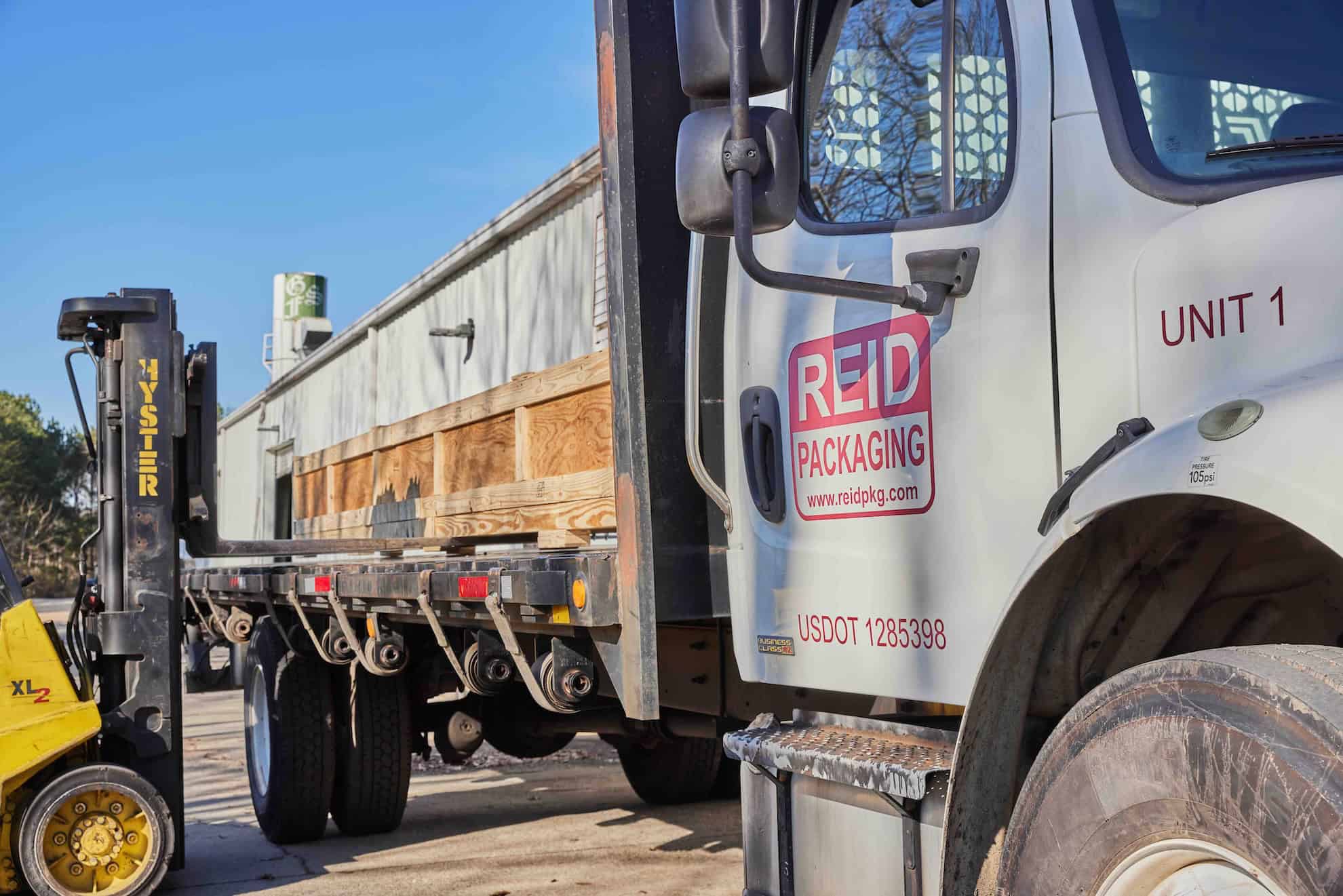Heavyweight Crating: Understanding How to Package Heavy Machinery
Relocating a factory or shipping industrial machinery isn’t just about packing up and moving out; it’s about ensuring that every piece of heavy equipment arrives safely and intact. And while it may seem fairly straightforward to put the machines in crates and load them onto trucks, there are a couple of important things to keep in mind when preparing to ship heavy machinery to avoid costly problems like delays, damage, or other liabilities.
One Size Doesn’t Fit All
One of the most common issues we encounter in packaging heavy machinery is the inadequacy of standard containers for the job. While standard shipping containers might seem like a good option, they are often either too small, risking damage to the equipment, or too large, leading to unnecessary movement within the crate. Using a custom wood crate, on the other hand, is often a more cost effective and efficient solution, as the container can be custom built for the machinery, and won’t require shipping any empty space over long distances.
The Importance of Weight Distribution & Lifting Indications
One of the most critical factors in safely packaging heavy machinery is understanding its weight distribution. Some machines may be exceedingly large, but their weight is concentrated on one end of the machine, where the motor is, for instance. The way weight is distributed across the machine affects how it should be crated and transported. An uneven load can cause instability or damage, especially during lifting or in transit.
To mitigate these risks, it’s essential to mark the center of gravity on the crate. This ensures that anyone handling the crate knows the best points to lift from, avoiding dangerous tilts or shifts that could compromise the equipment’s safety. In custom crating solutions, we always include a center of gravity mark, as well as “lift here” indications to ensure that the object is lifted and moved so that it does not get damaged.
Heavy Objects In Motion
A common misconception is that because heavy machinery is massive, it won’t move during transit. However, when a machine is in motion—whether on a truck, a ship, or a plane—the weight of the machine becomes momentum, which can cause it to shift, slide, or even break through the walls of its crate if not properly secured. So, just because it won’t easily move when it is still, doesn’t mean that it won’t continue to move when it is supposed to stop with the ship, train or truck carrying it!
Transportation Considerations: Ship, Train, Truck or Plane
Heavy machinery can be transported by various modes, including ships, planes, trucks and trains. Each method presents unique challenges that must be addressed in the packaging process.
-
By ship: Transporting machinery by sea requires protection against moisture and corrosion. It also requires export packaging protocols, like the ISPM-15 stamp on all dimensional lumber. Ships rock and tilt, so machinery must be securely fastened to accommodate the various forces that will act on the shipment.
-
By train: Rail transport subjects machinery to vibrations and jolts, requiring additional padding and reinforcement to prevent damage.
-
By truck:Trucks travel exposes machinery to vibration, bumps, fast stops, and hard turns, and must be secured to deal with all of these forces.
-
By plane: Air transport involves strict weight limits and space constraints. The machinery must be securely fastened to withstand the forces of takeoff, landing, and turbulence. Export packaging markings will also be required if the plane travel is international.
A smarter solution for your heavy machinery needs
Reid Packaging provides tailored solutions to address all of these challenges. Our custom containers are designed to fit the exact dimensions and weight distribution of your machinery, ensuring a secure fit and minimizing movement during transit. Our team employs advanced designs and hardware to keep your equipment stable, regardless of the mode of transportation.
Contact us today to learn how we can create a custom packaging solution that meets your specific needs and ensures the safe delivery of your equipment. Ready to get started? Let us know what you need by requesting a quote.

